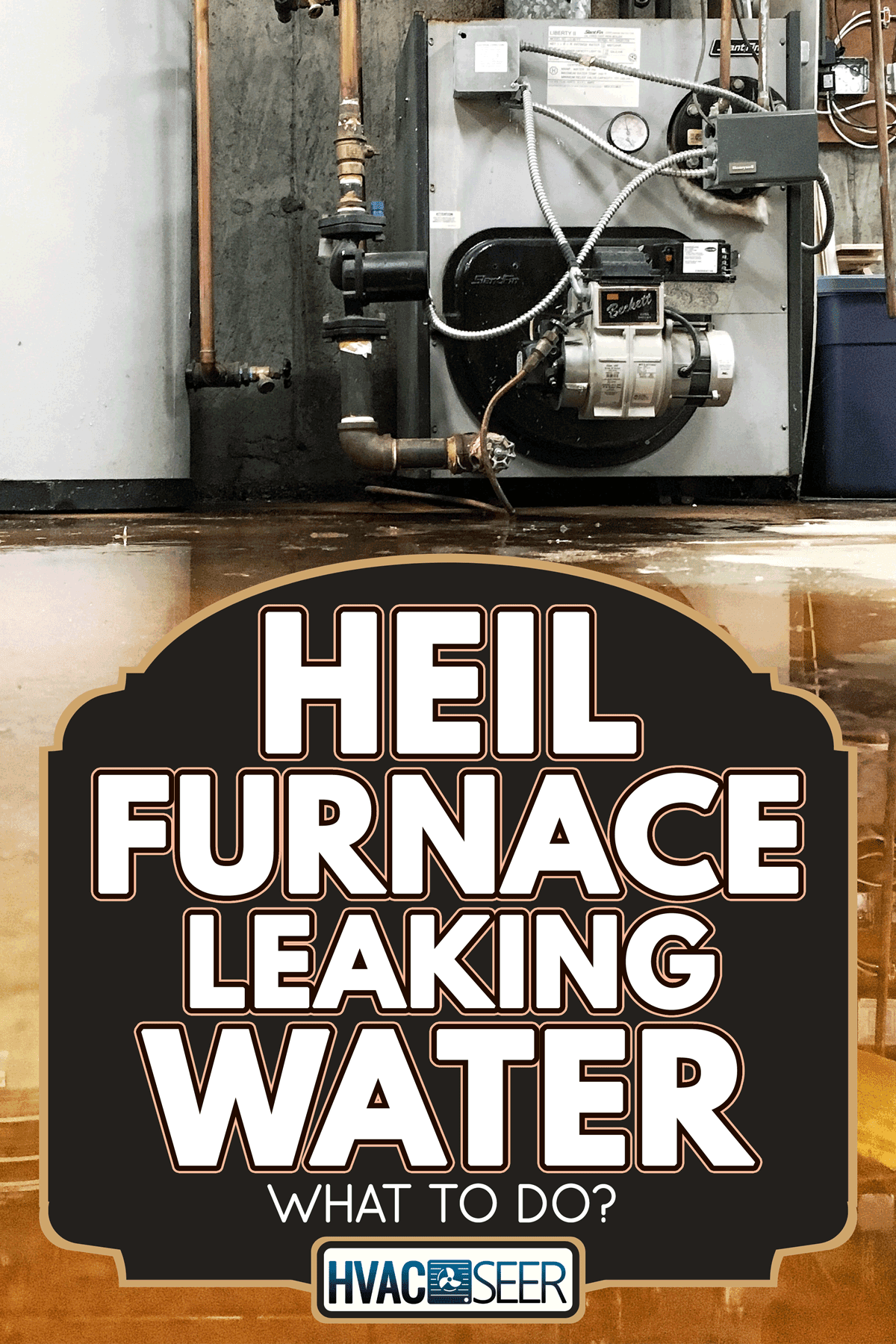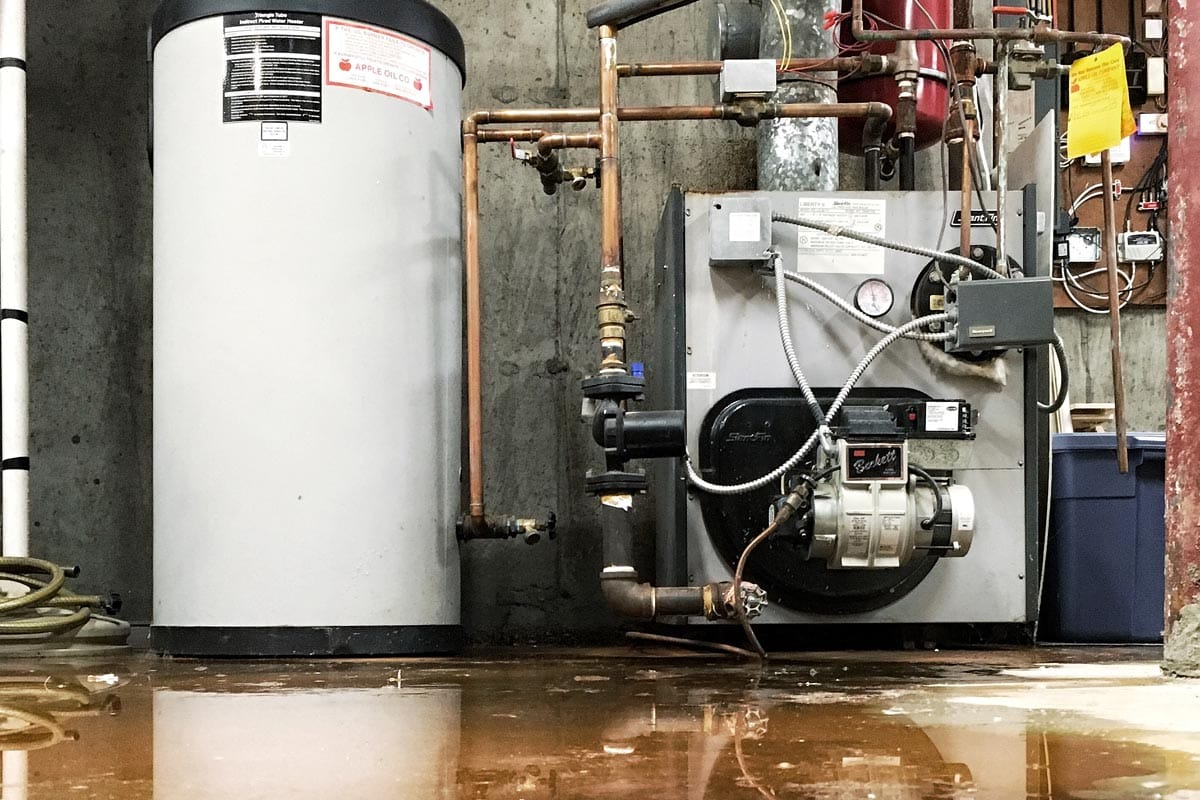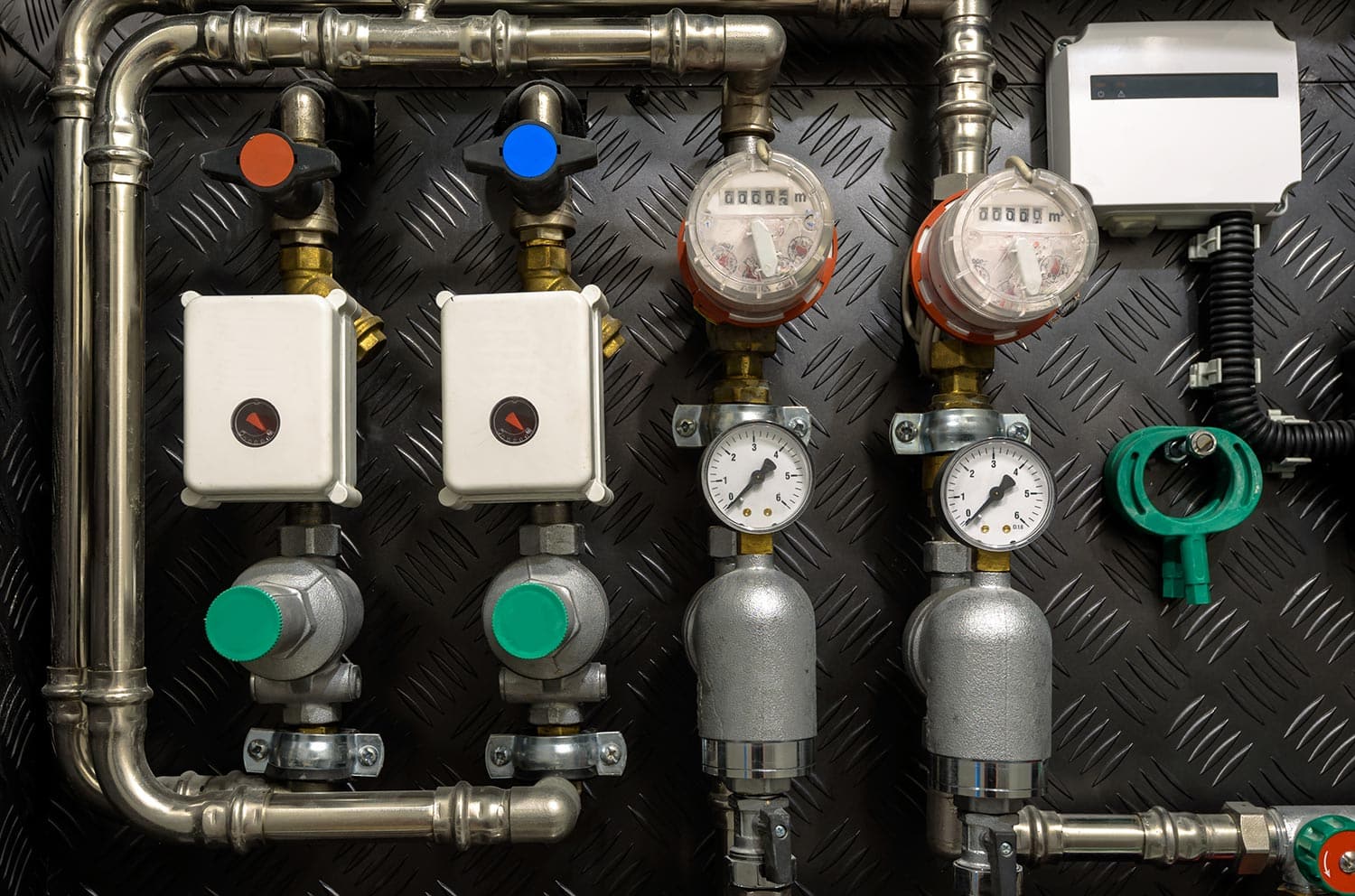Heil makes efficient furnaces that will be sure to keep your home warm. However, they aren't without the risk of potential problems. For example, what do you do if your Heil furnace is leaking? We have taken the time to research and answer that question for you in this article!
If your Heil furnace is leaking, follow these steps:
- Turn off the gas supply to your furnace.
- Clean up the water with a towel.
- Remove the front cover of the furnace.
- Find the source of the leak.
- If the leak persists after taking these steps, call a professional.
Your Heil furnace could leak for several reasons. However, when you notice this happening, it is essential to take action. That's why in this article, we will take a closer look at what you should do in the situation where your furnace is leaking. In addition, we will discuss how to unclog a furnace condensation drain, so read on!

Heil Furnace Leaking Water - What To Do?
A furnace is used to heat the air in a home. A furnace will include both a source of heat and air ducts to distribute the heated air throughout the house.
The furnace does not produce any heat but will work with natural gas or electricity to provide supplemental heating in the colder months. The furnace uses an electric fan, blower, or another device that draws in cool outside air and chases it over piping containing hot water or steam that creates radiant heat inside.
Once warm, this air is distributed through a ductwork system all-around your house, where it is blown into rooms through vents. However, as your furnace ages and is used repeatedly, it can have problems such as water leakage.
So what do you do if your Heil furnace is leaking? Follow these steps below!

1. Turn off the Furnace System
The first thing to do if your Heil furnace is leaking is to turn off the unit. This will prevent any water damage if you are unable to stop the leak immediately. To do so, look for a shutoff switch on the furnace. In the event you cannot find a shutoff switch, please turn off your natural gas supply.
2. Clean Up The Leakage
Clean up any leakage with a towel after shutting off the furnace and locating where the water is leaking from. If there is a lot of moisture in one area, placing towels all around it will help absorb the water.
3. Remove Front Cover of Furnace
After cleaning up any water, the next step would be to remove the front cover of your Heil furnace. To do so, use a screwdriver or nut driver. Again, ensure you are not touching any of the electrical components of your furnace while doing this. If you can, turn off the electricity to the unit completely.
4. Find And Tighten Screws Around The Leakage Point
After cleaning up the water, you will want to investigate where the leakage is coming from in your furnace. Look for screws or clamps around this area that could be loose, and tighten them accordingly if needed. You can tighten these items by hand or with a screwdriver.
4. Call a Professional
If there is still leakage after tightening screws, you may need to call a professional. However, it's important not to touch any electrical components while your furnace is leaking, as this could cause an electrocution hazard!
Who Do I Call if my Furnace is Leaking Water?

There are a few ways to find a professional if your Heil furnace is leaking water. One way would be to call the manufacturer.
The manufacturer will have technicians who know how to fix all different types of furnaces, no matter which brand. In addition, they can provide you with names and contact information for local professionals in your area.
Another way to find a professional is to ask family and friends. If you know someone who has experienced a similar leak, ask them who they called and what company could assist them with fixing the leak of their furnace!
You may also want to consider using an online source such as Angie's List, which can provide repair companies in your area.
Lastly, a simple Google search will help you find a professional who deals explicitly with Heil furnaces. Google reviews are a great way to find a reputable professional. It also never hurts to call two or three and get different price quotes and availabilities because they could be booked up!
How Do you Unclog a Furnace Condensate Drain?
There are a few steps you can take to unclog a Heil furnace condensate drain.
First, turn off the air conditioner and start by checking all the vents and air returns to see if they are loose and free of obstruction. This could be dust or lint that has accumulated and is stopping the airflow from your system. Clean all of these up as needed.
After checking the air vents and returns, you can now check for any clogs in your drain pipes. If there is a lot of debris within these lines, it may cause water to back up.
While doing this check, you will want to use a flashlight to see the inside of the drainpipe and some tongs to help you remove any wood or debris. If there are any kinks in the drainpipe, try rotating them so that the water can still flow through smoothly.
After checking for clogs in your air vents and drip pipes, you may want to call a professional if none of these steps have worked. They will be able to fix any broken piping or obstruction within the system and get your furnace back up to working order.
Where is the Furnace Drainpipe?
The furnace drain is a pipe that comes from the base of your furnace and goes through the floor. It's typically located on an outside wall. In addition, some furnaces will have another drain pipe for the vents. These can typically be found in the inducer housing.
How Do you Replace a Furnace Drain Hose?
To replace the drain hose, you will want to turn off the air conditioning system. This way, you don't get water flowing into your unit that can cause damage while you are working on it.
You will need to find the drain pan of your furnace. It's typically located underneath where the furnace sits in your home. To drain the water out of this pan, either tie a rag around the drain hose and flush it out or lift it on the hose so that any remaining water can drain.
Next, you will need to replace the hose with a new one and remember to seal off both ends with tape once you have inserted them into their correct areas.
We recommend that you hire a professional to do this task if you are unfamiliar with how furnaces work. This way, you can ensure that your unit will continue to work properly and safely!

How Do you Know if your Furnace is Clogged?
One of the easiest ways to tell if there is a blockage in your Heil furnace is when it begins to make rattling or clanging noises. This could signify that something has collided with the furnace unit, a pipe is stuck or a part of the system isn't working.
However, if you do not hear clanging noises and your Heil unit does not switch on but it still has power (check to see that the breaker has not been flipped), then it may be time for some maintenance. In addition, if you have any sort of leakage coming from your furnace then it could be due to a clog somewhere in the system.
Another way to tell if your unit has a blockage is to take note of your utility bill. If the cost of your electricity begins to drastically rise, this could be an indicator that there is some sort of problem with your furnace.
Final Thoughts
It is essential to keep up with your furnace maintenance if you want it to continue working properly. If your furnace is older around 15-20 years, then it may be worth having it inspected to see if it is time to have the whole unit replaced. Getting a new furnace may seem expensive up front but in the long term, it will save you money on your electric bill.
For more articles like this one, check these out:
Can You Put A Furnace In The Garage?
